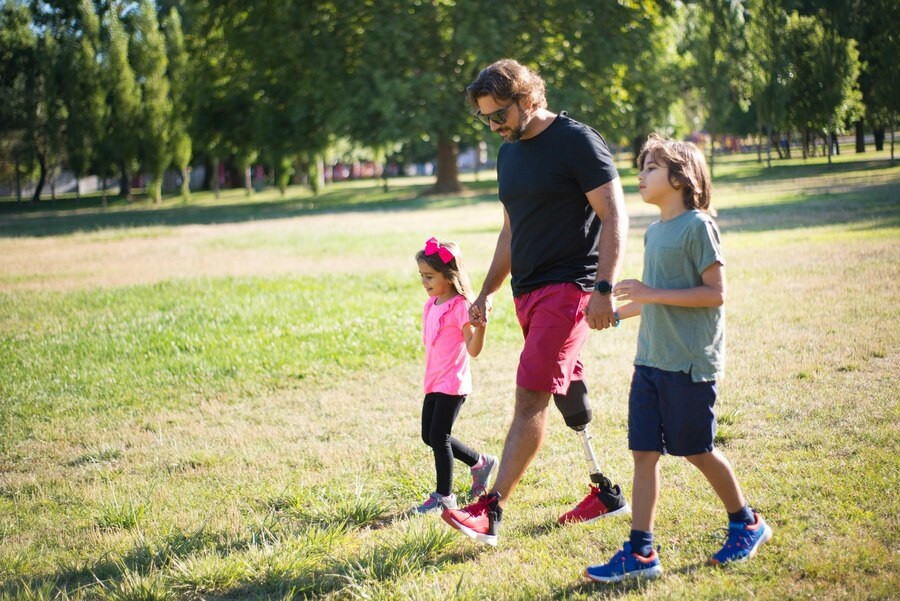Walking is a type of physical activity that is easily available to everyone. It has a low risk of injury and provides various health benefits. It is good for the heart, helps build muscle strength, reduces joint pain, aids in weight management, reduces cravings for sugary snacks, and contributes to enhanced mental well-being.
Committing to a daily 30-minute walking regimen can unlock these health benefits. However, how can you encourage your entire family, including children, to embrace this activity?
Benefits of physical activity for children's health
Given their age, children naturally enjoy playing, so incorporating physical activity into their daily routines can be enjoyable and beneficial for their health. Children's health advantages from physical activity align with those of adults. Children should stay active for several reasons, including:
- Enhancing cardiovascular health
- Maintaining a healthy body weight
- Improving posture
- Establishing a good sleep pattern
- Boosting self-confidence
- Enhancing concentration
- Building strong muscles and bones
- Improving social skills
Children between 6 and 12 should engage in moderate to vigorous physical activity for 60 minutes daily to maintain good health. One way to motivate children to embrace physical activity is to incorporate family walks. Encouraging children to be active alongside their families from an early age can establish a positive routine.
Ways to motivate children to engage in walking
Not all children may be interested and able to understand the benefits of walking. But that doesn't mean you can't raise their awareness of it.
Here are some tips to get your kids excited about your walking routine:
Having regular family time
Establish a regular exercise schedule as a family to cultivate enjoyable new habits. Children often find greater enjoyment in their activities when their parents participate. Engaging in activities like walking and conversing together can create a fun experience for everyone.
Participate in sports events
Encourage your children to engage in walking-related sports events, such as long-distance walking competitions or national walking events. The medals, t-shirts, and souvenirs earned from these events often ignite children's competitive drive, making them more enthusiastic about physical activity.
Join the walking tour community
Numerous sports communities are accessible across various forums and social media platforms. Consider joining a walking tour community with your children. Some offer guided experiences. These walks may include activities like exploring the area's history or notable buildings along the route, adding a layer of education and engagement to your time together.
Combining with technology
Children nowadays are undeniably drawn to technology. Introduce them to smartwatches or smartphone applications to track steps and monitor their physical well-being.
Equipping them with journals and maps
Consider exploring different routes that offer more challenges for your child. Equip them with a journal and a map to turn your walks into exciting adventures. Teach them navigation skills, encourage map reading, and join them in enjoying the journey until it truly becomes an adventurous experience.
Children between the ages of 6 and 12 typically require 60 minutes of moderate to vigorous activity daily, equivalent to 12,000-15,000 steps. However, children with specific health conditions may have different needs
Ideally, children aged 6-12 need moderate to severe activity for 60 minutes daily, equivalent to 12 thousand-15 thousand steps. However, children with certain health conditions may be different.
If you're considering encouraging your child to engage in regular walking or other exercises, it's important to consult your doctor first, especially if your child has any underlying health conditions. Please seek a doctor through the health consultation services available on the AI Care application, which can be downloaded from the App Store or Play Store.
Looking for more information about pregnancy, breastfeeding, and the health of women and children? Click here!
- dr Hanifa Rahma
Better Health Channel. Walking tips. Available from: https://www.betterhealth.vic.gov.au/health/healthyliving/walking-tips
Harvard Medical School (2023). 5 surprising benefits of walking. Available from: https://www.health.harvard.edu/staying-healthy/5-surprising-benefits-of-walking
Rachel MacPherson, BA, CPT (2023). What Happens to Your Body When You Walk 30 Minutes Per Day. Available from: https://www.verywellfit.com/walking-30-minutes-per-day-7969716
Better Health Channel. Children – keeping them active. Available from: https://www.betterhealth.vic.gov.au/health/healthyliving/children-keeping-them-active
Mayo Clinic (2023). Type 2 diabetes in children. Available from: https://www.mayoclinic.org/diseases-conditions/type-2-diabetes-in-children/symptoms-causes/syc-20355318
Wendy Bumgardner (2022). Taking Fun Walks With Your Kids. Available from: https://www.verywellfit.com/fun-walking-with-kids-3436010












